A radical photographic experimenter of his day with an extremely wide range of images to his name, Alvin Langdon Coburn (1882-1966) is one of the forgotten heroes of early twentieth century photography. Born in Boston, Massachusetts in 1882 Coburn was a key figure in the development of American pictorialism and subsequent transition to abstract and modern photography that followed. He was the first major photographer to emphasise the visual potential of elevated viewpoints, and his most famous photographs were taken in New York in 1912. From the top of New York city skyscrapers, he pointed the camera directly towards the ground, eliminating the horizon line and flattening perspective to emphasise abstraction.
His most famous photograph was The Octopus, New York, USA 1912. Back in 1912, the idea of showing the world from above was original and gained Coburn critical acclaim.
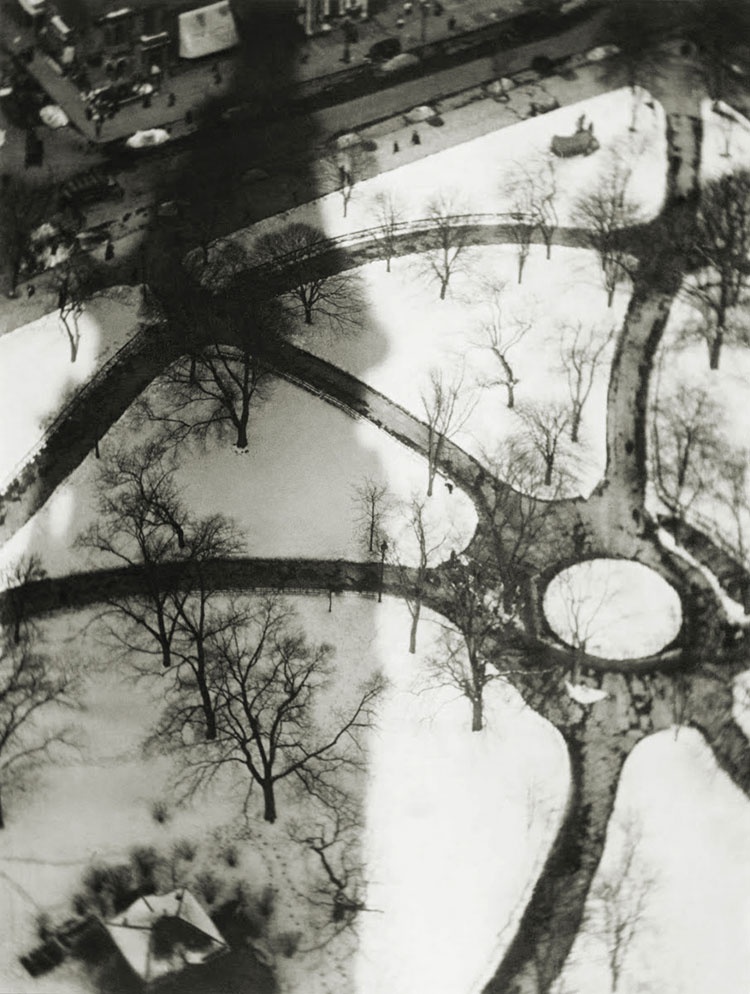
The Octopus, New York, USA 1912 by Alvin Langdon Coburn
Taken from the top of New York's Metropolitan Tower, looking down at a snow-covered Madison Square, the photograph breaks with conventional ideas of composition by excluding the horizon line: the pathways of the park resemble a living organism or an Art Nouveau design, while the shadow of the tower is darkly ominous.
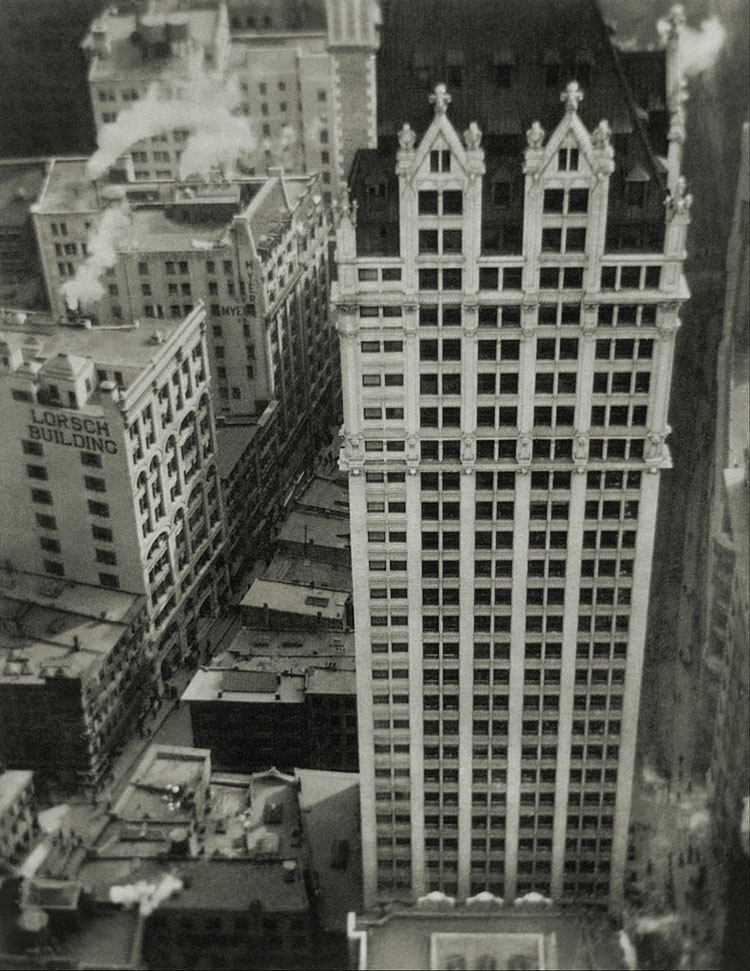
House of A Thousand Windows 1912 by Alvin Langdon Coburn
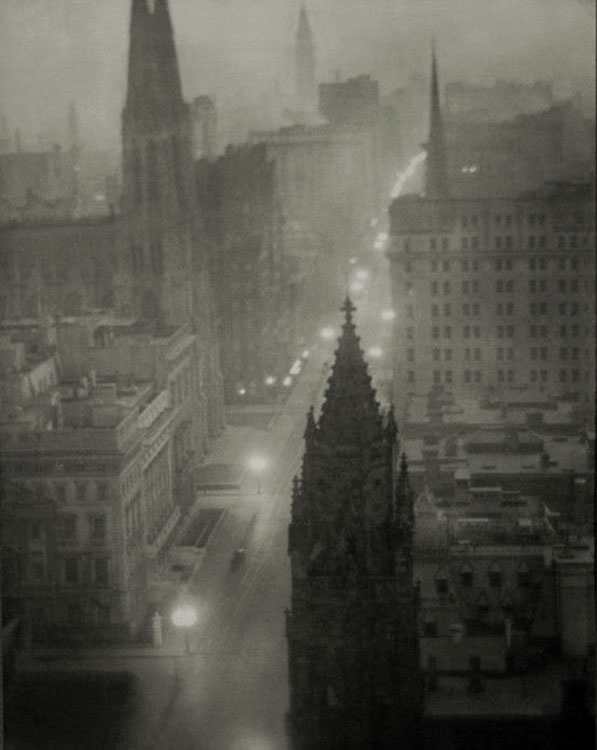
Fifth Avenue From The St. Regis, New York, 1905 by Alvin Langdon Coburn
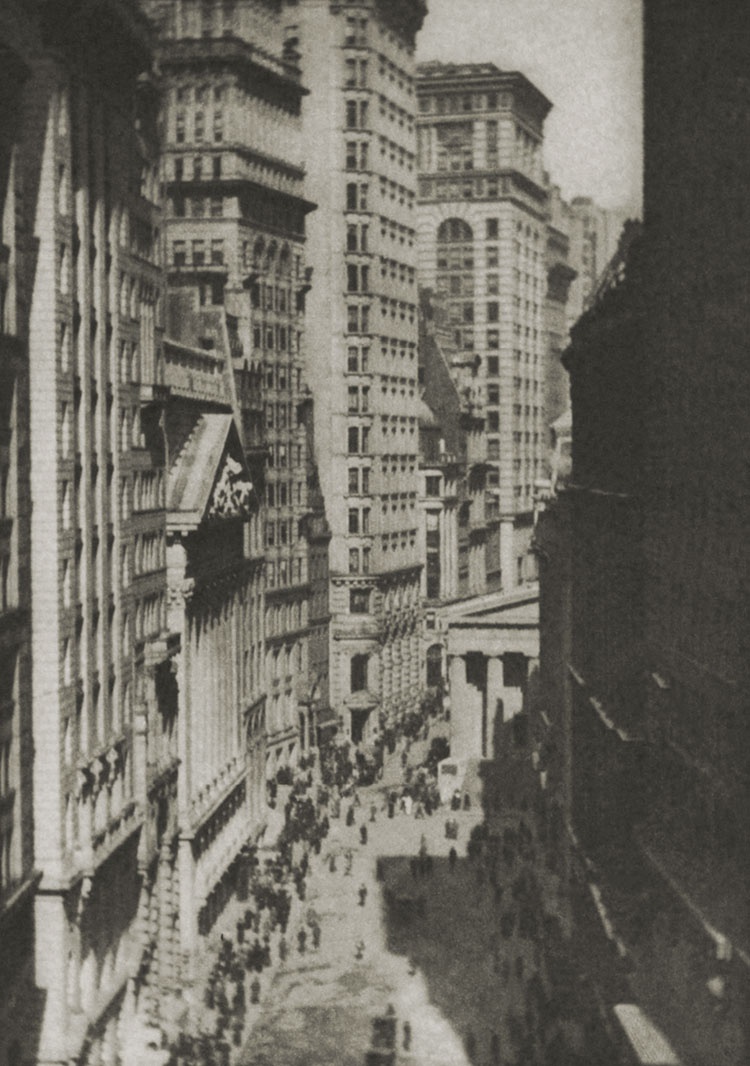
The Stock Exchange 1909 by Alvin Langdon Coburn
Coburn was a meticulous printer mastering many varied and complex processes, and was one of the first to successfully combine the rich tones of the platinum process with the subtle colour of gum bichromate. His unrelenting search for techniques to convey his unique vision led to him becoming the most important photographer of his generation to illustrate books with the elegant handmade photogravure prints he made in his studio, first for London 1909 and later in its matching sister book New York 1912.
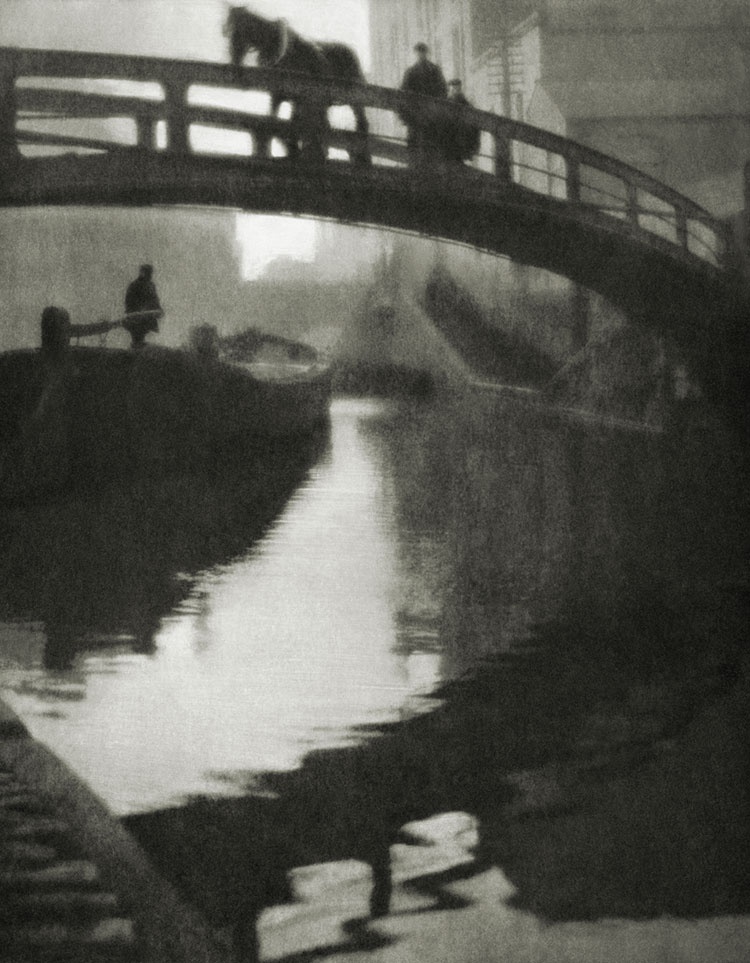
Regents Canal, London 1909 by Alvin Langdon Coburn
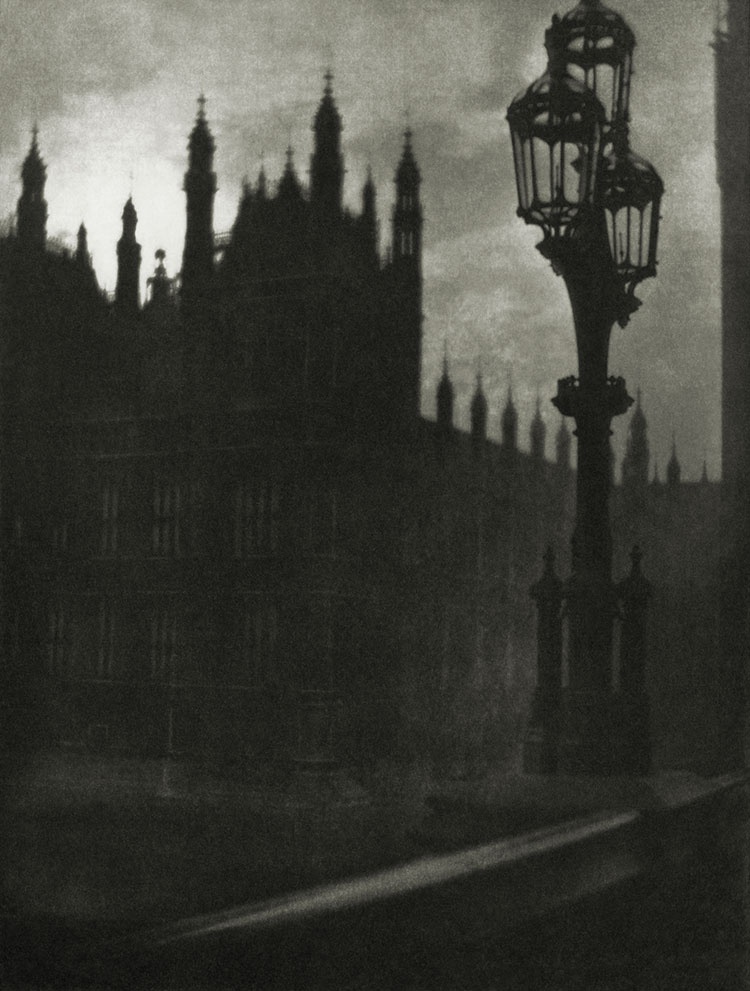
From Westminster Bridge, London 1909 by Alvin Langdon Coburn
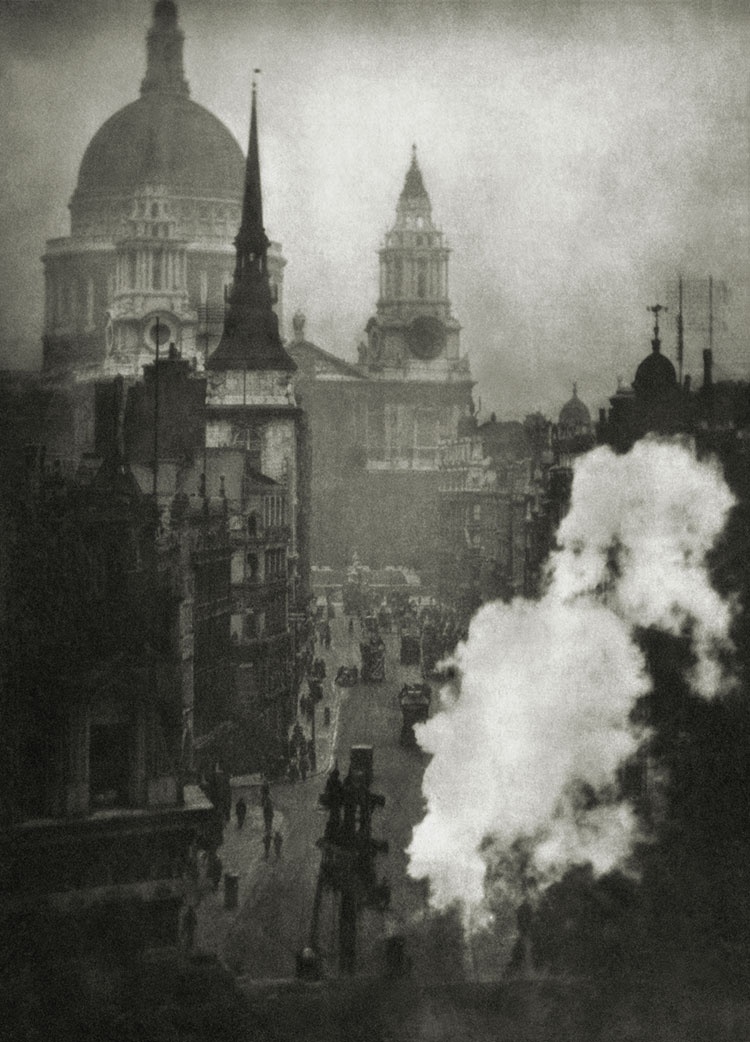
St. Pauls Cathedral From Ludgate Circus, London 1909 by Alvin Langdon Coburn
"I think I may claim that the photogravure prints in my books can be considered as 'original prints', and which I would not hesitate to sign…. I prepared the printing plates myself, by etching and steel facing them; I ground the inks and pulled the prints on various grades of paper until I had a specimen for my printer to follow… no one will ever know save those who have experienced it, what such an undertaking involves." Alvin Langdon Coburn, Truthful Lens, New York 1910.
Although he was born in America, Coburn was entirely at home in England and thought London was the most photogenic city in the world. In 1909 he bought Thameside, an old four-storey house by Hammersmith bridge. From his studio overlooking the water, he could watch the red-sailed barges float serenely by as the light changed and glinted on the water.
Coburn was a master of the impressionistic photograph and his early works resembled the tonal paintings of his idol James Whistler 1834-1903 (see The Thames at Battersea 1878 by James Whistler).
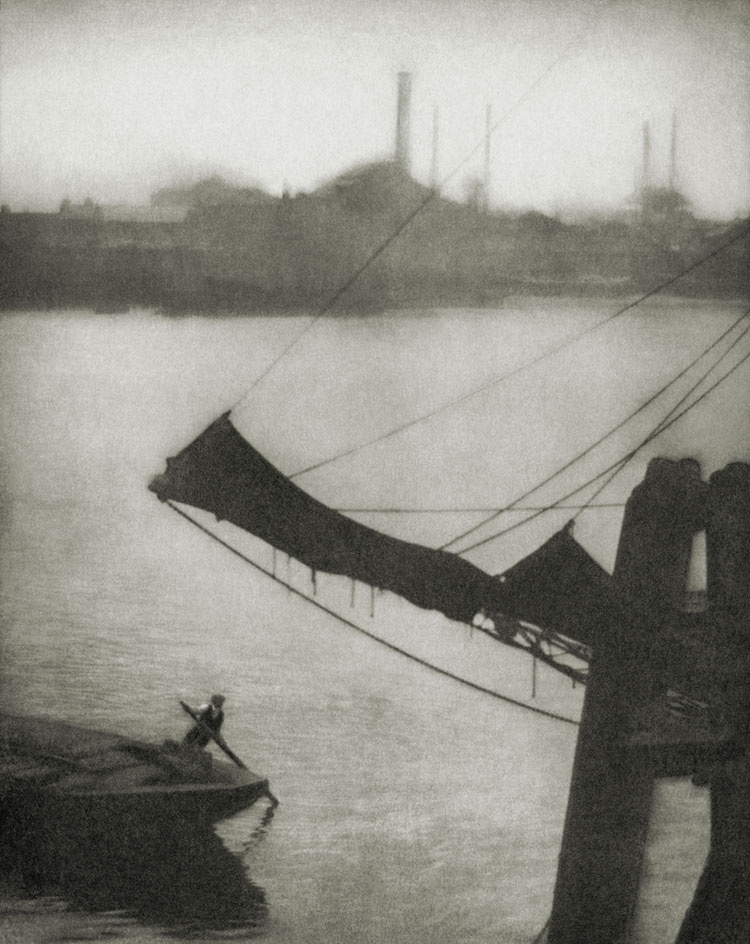
Wapping, London 1909 by Alvin Langdon Coburn
Coburn was also a noted portrait photographer and his celebrated 1913 book of portraits Men of Mark contained 33 photogravure prints of a raft of venerable European and American authors, artists and statesmen, including Henry Matisse, Henry James, Auguste Rodin, Mark Twain, Theodore Roosevelt and William Yates.
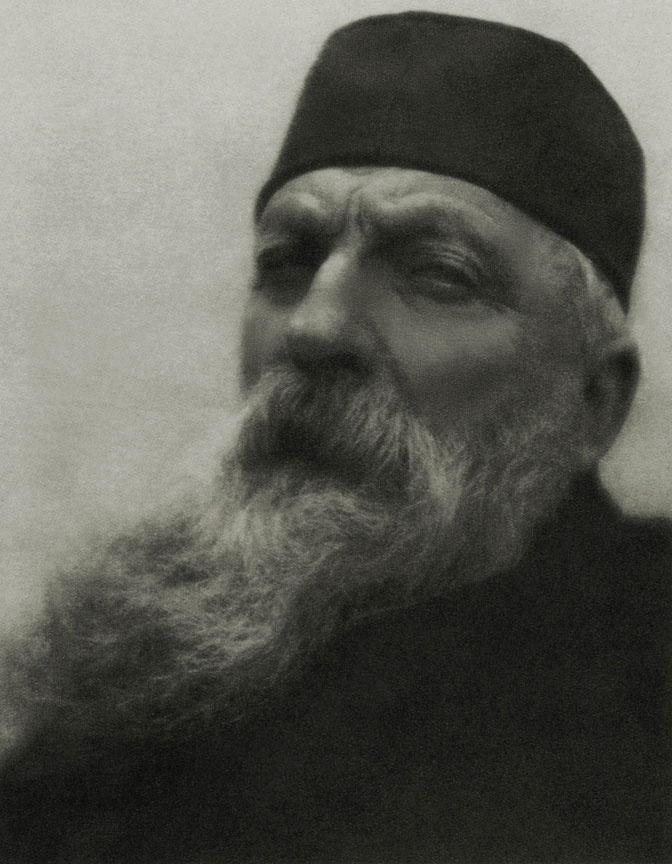
Portrait of Rodin 1908 by Alvin Langdon Coburn
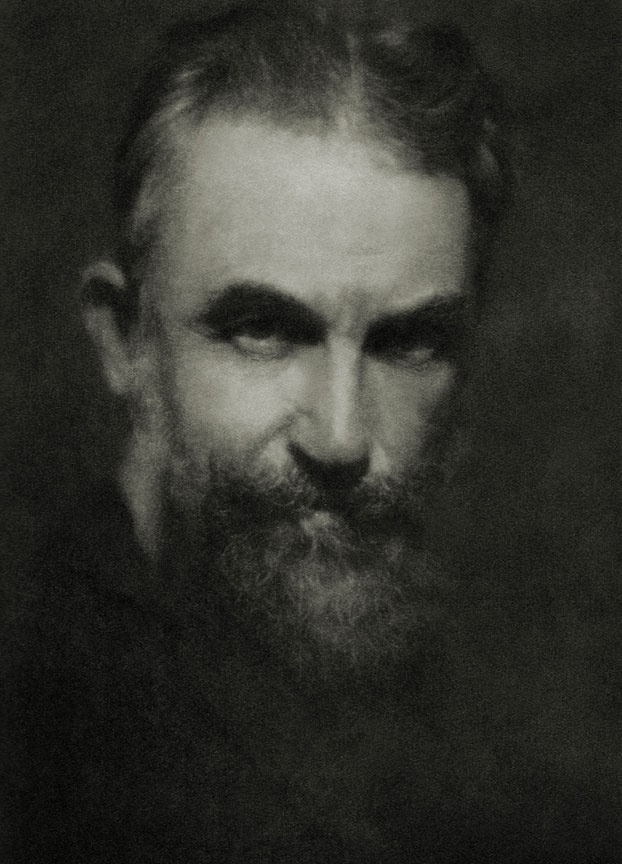
Portrait of George Bernard Shaw 1908 by Alvin Langdon Coburn
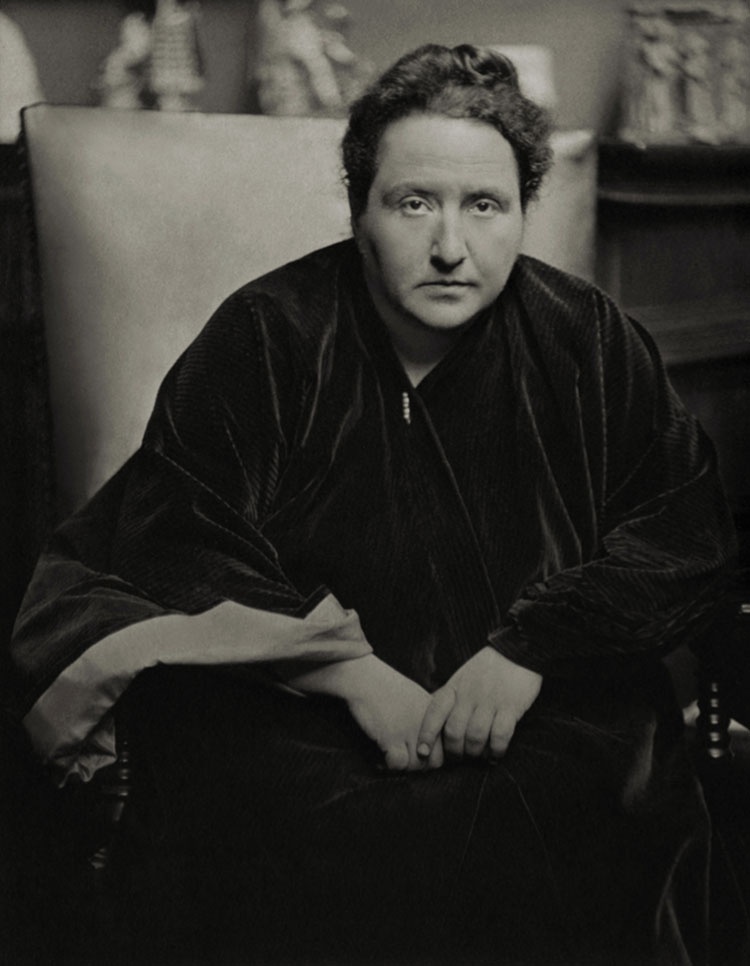
Portrait of Gertrude Stein 1913 by Alvin Langdon Coburn
Along with other major early 20th century Pictorialists such as Alfred Stieglitz (1864-1946), Edward Steichen (1879-1973) and Clarence White (1871-1925), Coburn was influenced by the ground-breaking work of the day by psychiatrists Sigmund Freud and Carl Jung which served to encourage the artist's contemplation of his or her own inner psyche. These artists photographed each other, and often themselves with self-obsessed regularity and there was renewed interest in the inner depths that could be revealed in a portrait. In 1907, Frank Eugene (1865-1936) made his famous self-portrait whilst sitting with Edward Steichen, Alvin Langdon Coburn and Heinrich Kühn (1866-1944).
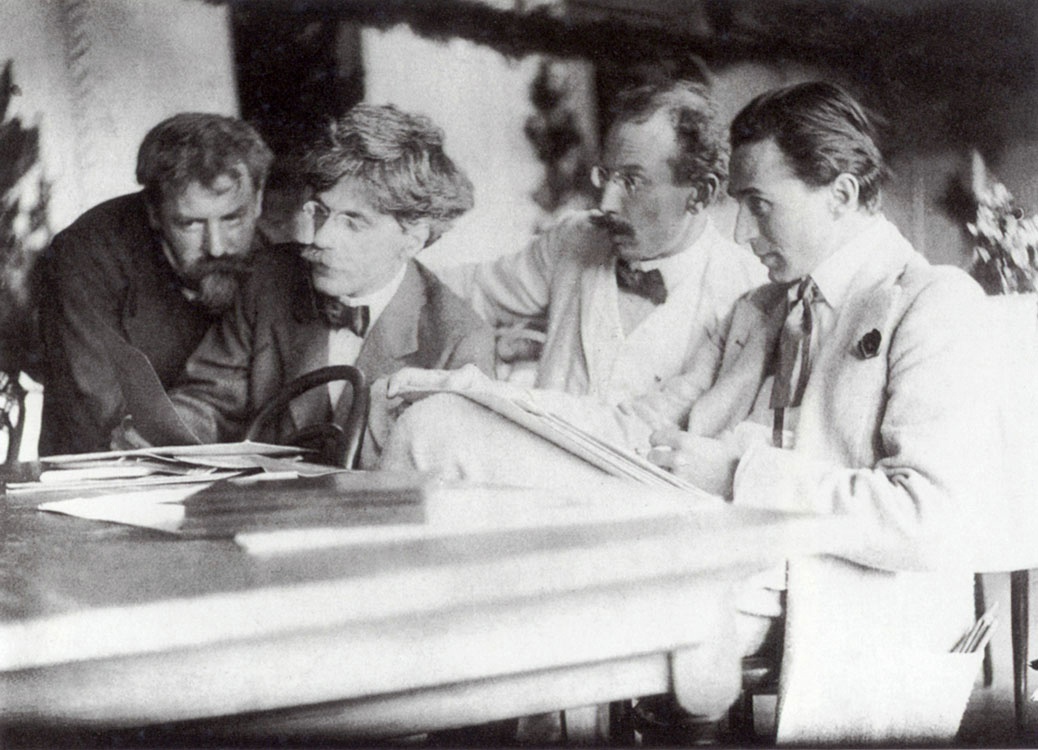
Eugene, Stieglitz, Kühn & Steichen Admiring The Work Of Eugene, 1907 by Frank Eugene
In the first decades of the twentieth century Pictorialist photographers took themselves very seriously indeed, and promoted their work through interviews, articles, books, lectures and a whole gamut of exhibitions throughout Europe and America.
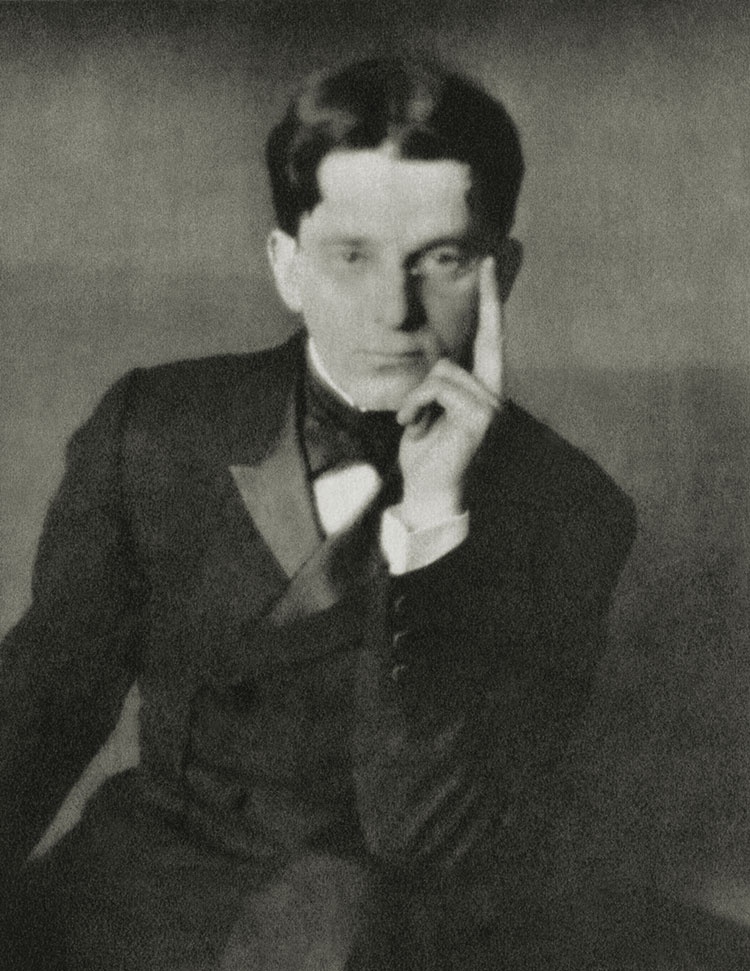
Self Portrait c.1909 by Alvin Langdon Coburn
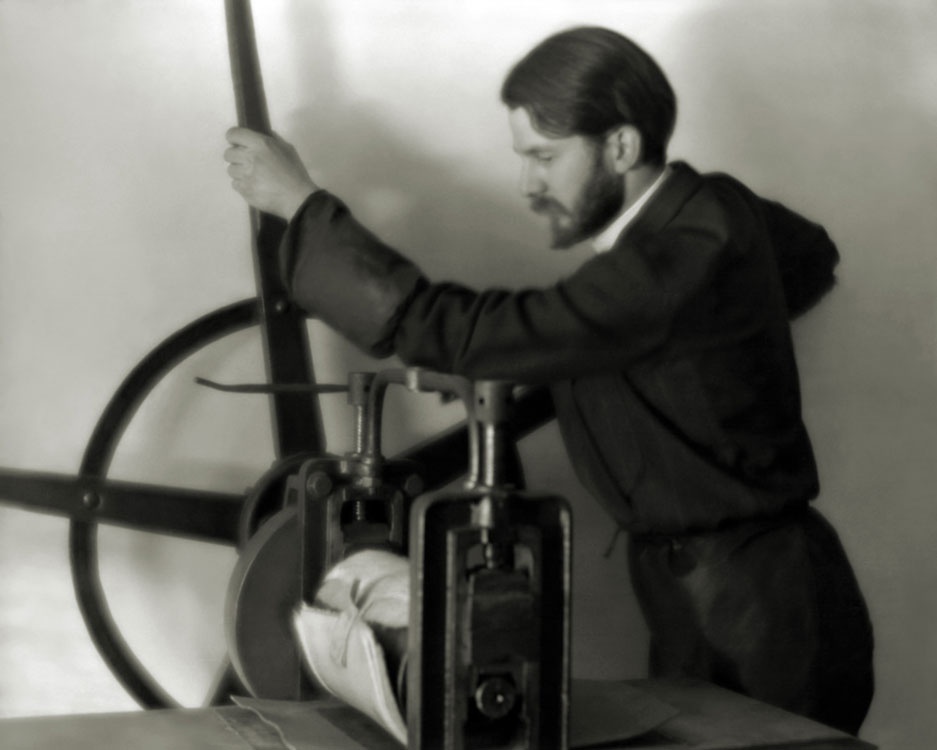
Self Portrait With Press 1903 by Alvin Langdon Coburn
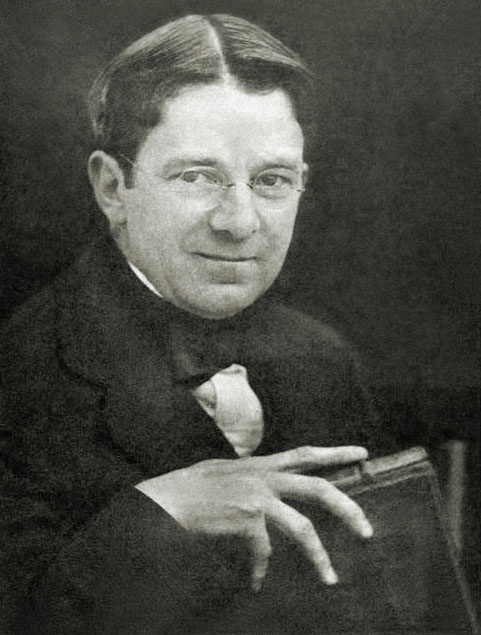
Self Portrait 1922 by Alvin Langdon Coburn
Coburn was a radical experimenter of his day and in 1916 he produced a series of 18 landmark photographs, called Vortographs, abstract pictures taken through a triangular tunnel of mirrors which were the first truly abstract photographs the world had ever seen. These photographs marked a pronounced shift towards modernism in the second half of his career following his interactions with the writers and artists of the English Vorticist movement, primarily with American poet Ezra Pound (1885-1972).
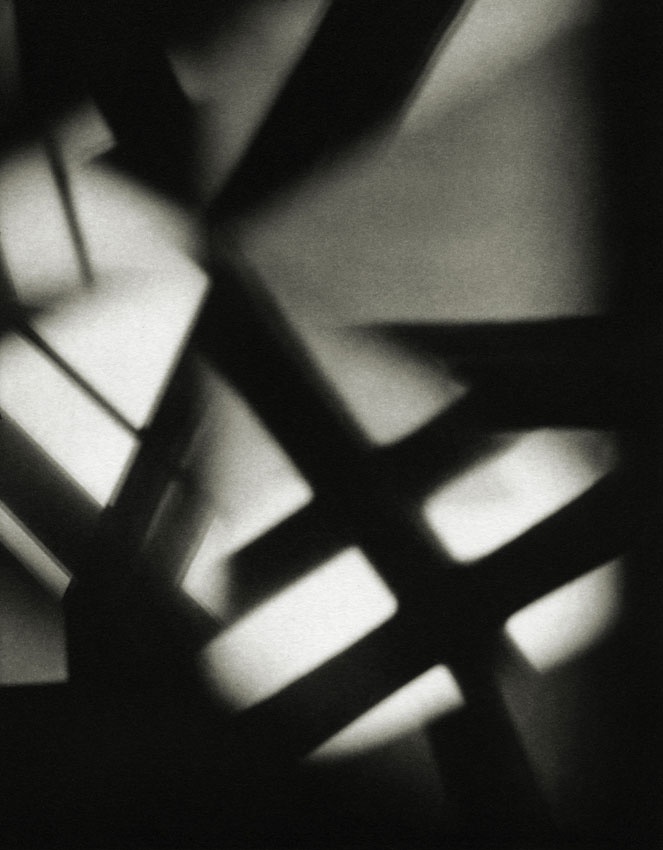
Arrow Vortograph 1916 by Alvin Langdon Coburn
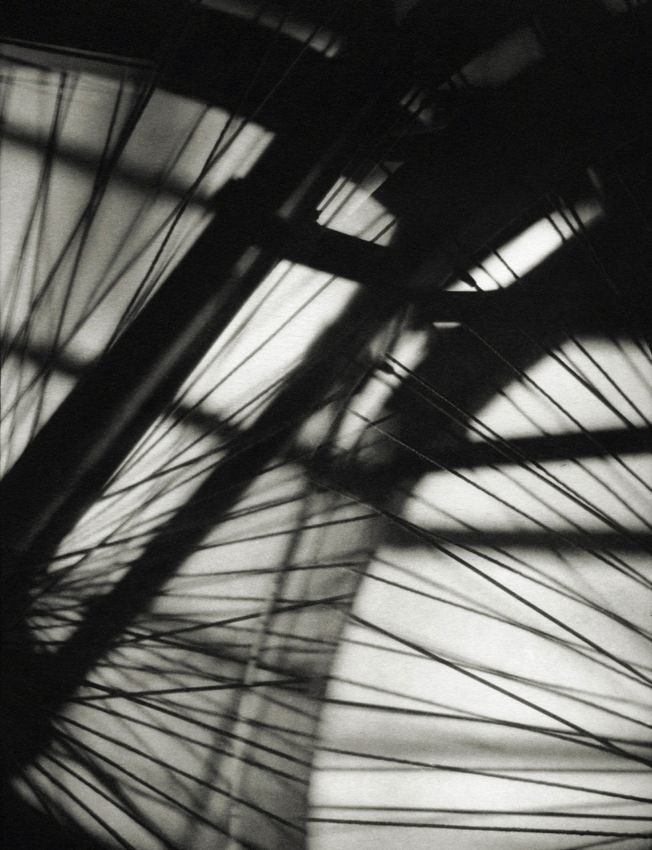
Bike Wheel Vortograph 1916 by Alvin Langdon Coburn
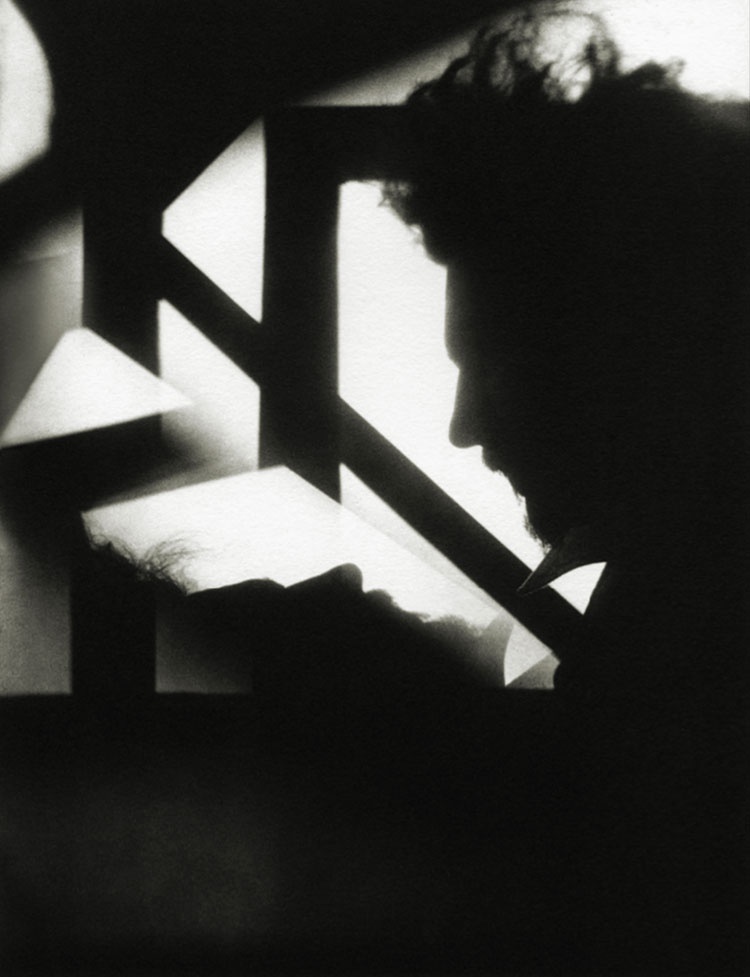
Vortograph Of Ezra Pound 1916 by Alvin Langdon Coburn
To make these images Coburn invented a kaleidoscope-like instrument with three mirrors clamped together, which when fitted over the lens of the camera would reflect and fracture the image. He called this instrument a Vortoscope and the resulting photographs Vortographs. Over one month in 1916 he made 18 Vortographs and they remain among the most famous and striking images in early 20th century photography.
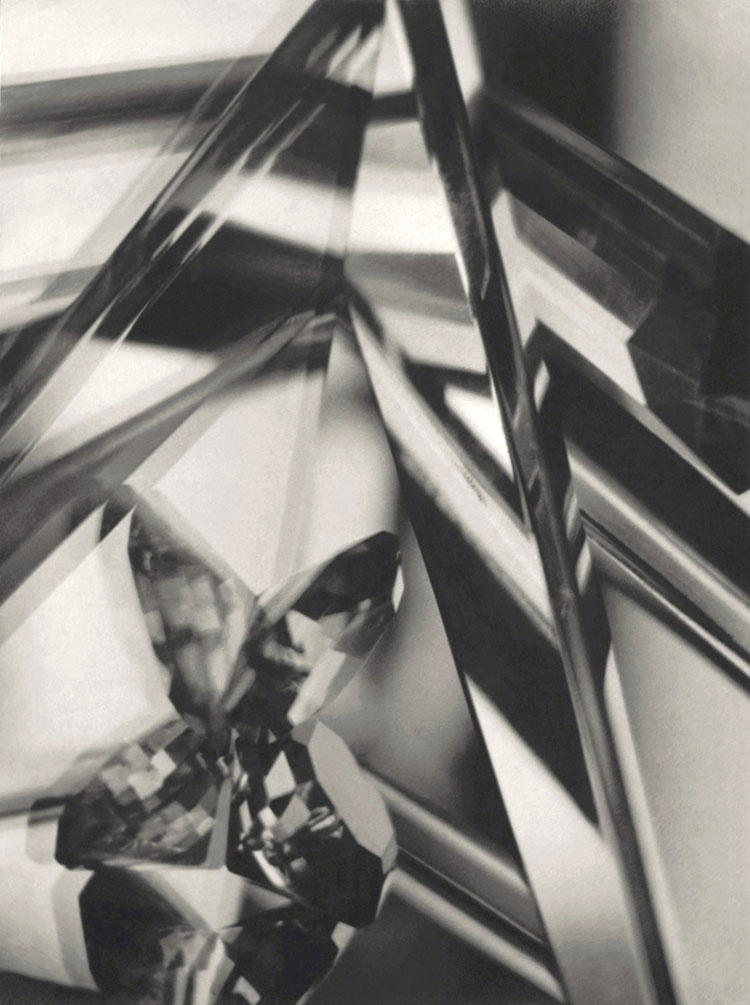
Vortograph 1916 by Alvin Langdon Coburn
This photograph consists of an intricate pattern of crystals made up of sharp diagonal lines, contrasting with compact crystalline shapes. A sense of dynamic movement is generated as light is embodied in multi-layered planes which seem as tangible as the fractured object from which they are thrown off.
"Coburn's Vortographs are the first body of artistic photographs in history to embrace total abstraction, the best of these photographs are quite remarkable: boldly composed, mysteriously unreal and intensely vibrant with light and energy. These images are, most importantly, about the idea of form and power, and come as close as any ever made to giving pictorial expression to thought itself." Keith Davis
"Coburn has one of the most fascinating archives in the history of photography. He started his career in a Pictorialist style when photographs looked more like paintings but went on to pioneer the modernist approach that followed as tastes changed towards the end of WW1. Along with its sister publication New York 1910, his book London 1909 is considered one of the cornerstone photobooks of the twentieth century." Luke Whitaker
